Thirteen Years
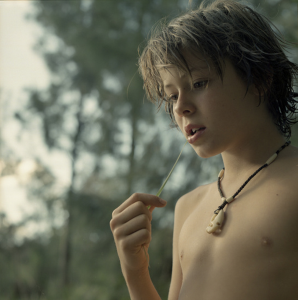
Background: The Gesell Institute of Child Development has observed that children and teenagers go through a repeating sequence of six different stages with predictable changes in mood and behaviour in each. Thirteen Years includes just one such stage. The behaviour observed in these stages reflects the qualities associated in tradition with the planets—in the case of Thirteen with Mars.
The developmental traits in these profiles represent only one aspect of children’s behaviour and may be masked, modified or intensified by other factors, both individual and environmental, such as temperament, gender related behaviours, high stress levels, over-stimulation, too much screen time or organic problems.
Note: If your teenager has turned this age but shows none of these behaviours, please read the previous age level, or just wait a few months, then read this again!
These profiles integrate the wonderful descriptions from the Gesell Institute of Child Development research and the ideas of Rudolf Steiner into my own research. Direct quotations from Gesell are in ‘single quote marks’ or indented.
View/download pdf Thirteen
Thirteen
A stage with Mars qualities
Thirteen, like Seven, is another interesting manifestation of the qualities of Mars. Thirteens show an earnest, determined, concentrated outward thrust into the task at hand, but also a withdrawal inward to digest and ponder experiences, equally seriously, in a sometimes rather melancholic mood. The characteristic withdrawal of thirteen year olds occurs mostly at home, worrying parents that their Thirteen sometimes seems reluctant to stay in their company. With all this comes strong independence and individualisation.
Gesell researchers give a picture of this:
A 13-year-old boy joins the family group to enjoy an evening TV program. He is interested, but in the middle of the program his face suddenly assumes a detached and serious expression. He rises unceremoniously and without a word he goes to his room—to cogitate, to ruminate. We cannot penetrate his reveries, but they are not interminable, and on his own initiative and responsibility he presently makes a concentrated assault upon his homework. In a sense he is concerned both with inner and outer affairs.
This is an objective and compassionate description of Thirteen, of the sort Gesell researchers provide so often in their books. At home, where things are worst with Thirteen, parents describe them less kindly, as critical, withdrawn, sad, sour, suspicious, unfriendly, uncertain, unhappy or morbid, morose, moody, indifferent, sullen, secretive. Oh dear. At their best Thirteens might be described by a mother as thoughtful, quiet, self contained. While the Gesell researchers agree that Thirteen does not appear to be a very happy age, they suggest that their behaviour has wisdom in it, and withdrawal has its positive constructive side. (See their book in Further Reading below for more wise words on Thirteen.)
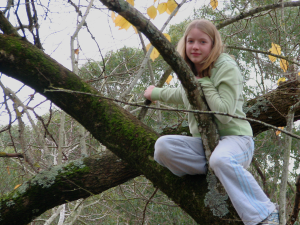
Physical development
By Thirteen, the emphasis in physical growth is well established in the limb and metabolic system. It is the completion of the second seven year stage of growth. Limbs are lengthening. Puberty is established in most children although this manifests in a wide range of stages at this point, some barely showing it, others clearly well on their way to sexual maturity. At the other pole, in the brain and the thinking, more abstract forms of thinking (what Piaget called formal operations) are becoming more evident, since the major changes started occurring in brain development at about eleven.
In health Gesell observed that Thirteen ‘is in general continuing to improve.’ Interestingly they also comment ‘The presence of a fever as high as 103-4 [F] which may occur without any evidence of a cold or other illness can usually be related to an unusual intensity of mental activity.’ In vision development, ‘Thirteen, in his inwardising process, is reducing his functional far sightedness (or hyperopia). This trend, if continued, would result in a measurable near-sightedness, but fortunately Fourteen reverses the trend and farsightness is increased slightly.’
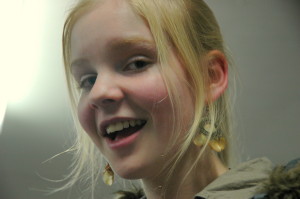
Sense of self
The interplay between the outer and the inner is characteristic of Thirteen. While they may show intense interest in their surroundings and in learning, with the ability to apply themselves energetically to tasks they are interested in, they also withdraw to digest experiences in potent but silent musing.
The energetic action based on feelings associated with Mars, is clearly present, as Gesell describes: ‘Voracious reading is one way of satisfying this inner urge. Constant expenditure of this new found energy on private enterprises is another.’ ‘Thirteens life is a very full one…’ ‘This busyness of Thirteen can be so extreme that it may be hard for him to find time to “squeeze” in even things he wants to do, let alone household chores. But his energy can be bountiful….when Thirteen is both mobilising and expending his efforts in an organized fashion, especially on something that has aroused his feeling, it is amazing to watch him in action.’ ‘He handles time quite well, but often arrives at that last-minute rush, [with] the need to accomplish something in those last “decisive five minutes.”
All this action is then processed inwardly by Thirteens. They can suddenly become detached and serious and withdraw to cogitate, with inward rehearsal and self-examination. They now reflect, narrow things down, compress, review and discard; their thinking is focussed, less broad than it will be later at fourteen. As a result of all this they are more aware, more insightful. Perhaps their gift for mimicking and impersonating others also comes from their ‘digestion’ of the essence of others. Their musings are many sided— choices, wishes, ideas, ambitions.
All this reflects in their behaviour which needs to be understood in this light. For example, their inward process can be so intense and inwardly absorbing that, like Sevens, they may appear to be deaf. They may seek aloneness more and have spells of silence and musing. They make less conversation and may be briefer, less open and communicative. They may show less humour, may keep their voices lower, slower and be more subdued. They may shrug more. They may be shier, touchier, moodier; they may look sullen and glum, but we should not judge them to necessarily be really so.
All this inward reflection brings growth but does not make it easy for Thirteens, for they turn their examinations just as intensely on themselves. This includes examination of the physical self. Much time is spent looking in mirrors by boys and girls coming to a realistic appraisal of the visible self! Gesell noted that a new kind of precision comes into the personal appearance of many Thirteens and that they are said to be “very particular”.
 Thirteens, and indeed all teenagers, become very vulnerable in such self-examination of outer appearances when disproportionately influenced by advertising images of what is “good” in appearances, particularly when self-esteem is low. Social media can add a lot to this problem with the emphasis on the outer appearance of people in ‘selfies’. Adults can help here by re-affirming the value of inner qualities, inner beauty and the teenager’s individuality. Affirming their care of appearance—“You are looking nice today.”—is also helpful in making them less dependent on positive feedback from friends. Of course, this affirming of their outer and inner qualities was best done in the years before this, when the children were more likely to listen, but it needs to be continued now, not as little lectures, but in our own accepting and loving them for who they are “inside” and “outside”.
Thirteens, and indeed all teenagers, become very vulnerable in such self-examination of outer appearances when disproportionately influenced by advertising images of what is “good” in appearances, particularly when self-esteem is low. Social media can add a lot to this problem with the emphasis on the outer appearance of people in ‘selfies’. Adults can help here by re-affirming the value of inner qualities, inner beauty and the teenager’s individuality. Affirming their care of appearance—“You are looking nice today.”—is also helpful in making them less dependent on positive feedback from friends. Of course, this affirming of their outer and inner qualities was best done in the years before this, when the children were more likely to listen, but it needs to be continued now, not as little lectures, but in our own accepting and loving them for who they are “inside” and “outside”.
Self-appraisal and self-criticism also is applied to the emotional life of Thirteen. Qualities of Mars as the “responsible protector” show through here. Gesell tells us that Thirteens have a sense of duty and are adaptable, and generally cooperative and dependable; they seem at times, overconscientious. ‘He indulges in many private worries’ and ‘is a great worrier. He says himself that “‘he worries about most everything” or he worries that he is going to worry.’ Thirteen is also ‘a precisionist—a critic of his own performance as well as that of others.’ They want to do their tasks well.
What makes Thirteen more vulnerable is that, while they are aware of their feelings and have their feelings more in control, they also have ‘a sensitive core’ and are ‘easily hurt.’ They are ‘very sensitive to criticism and keenly perceptive of the emotional states of others.’ They have ‘feeling for others in trouble, especially physical trouble.’ Thirteens need sympathetic understanding. This not always easy of course, because Thirteens also apply their critical powers to all their associates, young and old.
Parents particularly get rather detailed criticism! Thirteens really resent parental intrusions into their lives and their space. Questions about their doings may be interpreted as prying. We will see this again at Fifteen. Parents need to accept this sensitivity is real for them and to respect their privacy as much as it is possible to do so safely. Be available to them, but stand aside. If you give them the freedom to step in and out of their own accord, to share or not share as they feel, if you truly respect their space, then they may not have to barricade their doors (metaphorically, with sullen looks, or actually, with “Keep out!” signs). Then, they may (or may not) sometimes willingly share with you.
Thinking
Thirteens’ intense cogitation and criticalness also reflect the complex changes to brain structures occurring parallel to the hormonal changes in adolescence. They are capable now of more abstract thought—they show more propositional thinking and more doubts; they can understand necessity, probability, and more hypothetical conditions—they are becoming less literal in their thinking. They are beginning to feel the new power of genuine thinking.
They are now influenced by ideas and opinions from respected adults, the media and elsewhere. Their new intellectual power allows them to receive the information, but they may still lack the perspective and discrimination that comes from experience to judge it accurately. They may fall in love with an idea, accept it on the flimsiest evidence, or on the word of an “authority” whose opinion they respect, and permit no contradiction of it. They may accept ideas as the whole truth, where in context they are really only half-truths. This can result in dogmatic statements that do not hold up under questioning. It can be a potent source of frustration for parents. They need help to see bigger perspectives.
Will power & personal power
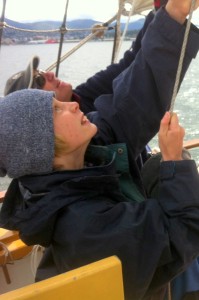 It is characteristic of thirteen year olds to be conscious of their increasing “will power.” This is consistent with the emphasis in physical growth being now in the limbs and metabolic system (as we saw in Twelves). Now at Thirteen, even in arguments, they sense the power of their opinions and can test their skill by manipulating friends and adults. It pays to be awake to this so we do not give them illegitimate power! It brings the possibility of bullying with it! The best side of Thirteen, however, would use power in the service of others and also in healthy self-empowerment.
It is characteristic of thirteen year olds to be conscious of their increasing “will power.” This is consistent with the emphasis in physical growth being now in the limbs and metabolic system (as we saw in Twelves). Now at Thirteen, even in arguments, they sense the power of their opinions and can test their skill by manipulating friends and adults. It pays to be awake to this so we do not give them illegitimate power! It brings the possibility of bullying with it! The best side of Thirteen, however, would use power in the service of others and also in healthy self-empowerment.
Such healthy use of Thirteens’ willpower is evident at school in more self-control. Gesell illustrates this: ‘The rapid almost pell-mell enthusiasm of Twelve is now withheld and concentrated in more organised and sustained eagerness to learn….’ ‘He may not chase as he once did but he jostles any near-by companion and is notorious for his inability to stand in line. He stills snatches from classmates, but selectively.’ ‘Time is better organised. Concentration is more sustained, self-control is more evident.’
Their will is also to be found in their desire for independence. Gesell again: ‘He is galled when he meets the cloak of authority. He wishes to feel independent as well as be independent… He wants the freedom of decision.’ This need for inclusion in decision making, wherever possible and appropriate, needs to be accommodated, if adults are not to push Thirteens into rebelliousness.
Thirteens also show this need for independence in doing things for themselves, in completing things, conscientiously. Gesell describes this: ‘Thirteens are above all interested in trying new things.’ ‘He’s also shifting his interest in the macrocosm to an interest in the microcosm.’ ‘He wants to get in and demonstrate a thing for himself.’ Once settled, ‘he is good for a twenty – to thirty- minute period of intense concentration. He wants to finish his work… he doesn’t want any work hanging fire…if he does have homework regularly, he is usually conscientious and on his own, whereas he needed help at twelve.’
Thirteens also use the power of speech (another Mars quality).They can now use words to bring their feelings under better control while they are coming to grips with the seesawing of new emotions. Thirteens can rage by words! They may verbalize defiantly and take an unpleasant antagonistic attitude, perhaps defending their own ego by warding off the parent with words. Trouble with siblings tends to appear in fights with words too. They also use words to express their sense of humour, which is crisp and sardonic. They search perhaps for the right words and are more precise. They enjoy verbal sparring but also may like calm discussions of issues. It is wise for parents to give them opportunities which challenge their powers of rational argument while staying well away from emotional issues.

Relationships
Thirteens are more discriminating in their choice of friends and have fewer of them. They are more constrained in expressions of affection and may appear standoffish. Because they are more independent, they are likely to resolve things within themselves and not depend on others, including family. They may withdraw from close confidential relationships with parents and from outward shows of affection, though when parents are sensitive to their needs this does not always happen, nor does it have to be seen as a problem.
Thirteens still tend to comply with demands and mores of peers but are more aware that questions of compliance or rejection are up to them. Individual differences are stronger. Amidst pressures, they can preserve their self-identity and achieve a measure of independence. Affirm and trust this in your children.
School
The picture they show at school can be very different from the one they show at home. Here their awareness also grasps all that is in the world and they work with this inwardly. They can show intense interest in assignments and knowledge. They are hungry for facts but also love fantasy and can become completely engrossed in books that feed this need (in fact they may be reading these when holed up their bedrooms at home!).

As already noted, Thirteens value their independence and own decision making power. Both individually and as members of a group, Thirteens often have an internal resistance to authoritarian teachers and adults. Adult relationships with Thirteens depend a great deal on finding the right balance of inner adult authority (worthiness of respect) and respect for adolescent independence- they do not want us to be either permissive or autocratic! It is important that Thirteens are given some control in their lives, with the expectation of corresponding responsibilities and trustworthiness. They need adults to be clear about what is negotiable and what is not; what are the guidelines for living which parents and teachers want to encourage (e.g. mutual respect, care, consideration); what are the important considerations and priorities for decisions, especially in regard to safety, health and the young person’s and adult’s responsibilities. They appreciate open, direct and honest communication.
They need their parents to guide them wisely into a world which can be full of pitfalls—but for this guidance to be accepted, it needs to be done with respect and understanding of their needs. Parents need to accept that life skills, like anything else, need practice; mistakes will be made and second chances may often be necessary. Parents also have to allow the young adolescent to feel the remorse and pain of the consequences of their actions— these are what drive moral growth and determination to do things better next time.
Sexual intercourse, alcohol and drugs
This is an age where parents start to worry more about what their children are doing in relation to sex, smoking, drinking and drugs, especially if the children are communicating only reluctantly with the parents. This is a time for awareness not panic. Some children are more at risk than others. This is the time to look at the risk factors to consider what you need to do and what your child needs to be aware of now. Then make sure you and your child are well informed about personal safety, protective behaviours and sex education. This is about teaching them about serious self-care, respect for their bodies and themselves. It will be better if you have done all this before now and can just update the information they need to their present circumstances, and reinforce the importance of self-care, but it is never too late to start. (There is a lot of information available on the internet on all this now, government health and parenting websites are a good place to start, in Australia at least. The books of Freda Briggs are highly recommended for information on protective behaviours). Note that this refers as much to boys as to girls. Current research (Briggs) is showing that sexual abuse, for example, may be even more prevalent amongst boys than girls and that it has long been under-reported by boys and men.
First sexual intercourse. While the slower maturing Thirteens may be slightly less interested in the opposite sex than at twelve, many are now mature enough to be involving themselves in ‘sexual activity’, which a recent Australian government report (Stathopolous 2012) said was normal even for Twelves. But they are not referring to full sexual intercourse here.
There is not a great deal of information on the timing of first sexual intercourse, because most studies look at mean ages and concentrate on 15 years and beyond. While some estimates are as high as 5 %, the Guttmacher Institute in the USA suggests that fewer than 2% children have had intercourse by their 12th birthday and of these, twice as many are boys, not girls. This predominance of boys in the first intercourse figures by age group continues up to and including fourteen years and is particularly interesting considering most boys are a year behind the girls in sexual development at this stage. The figures for first intercourse for girls and boys are more similar from about fifteen years on. The Guttmacher charts suggest that about 3 % girls and about 5% boys have had intercourse at thirteen. At fourteen these figures rise to about 5% girls and 10% boys and at fifteen to about 13% for girls 18% for boys. For comparison, The Kinsey Institute put the figures for fifteen much higher (25% for boys, 26% for girls). Such figures are also different in different countries (Scandinavia, first intercourse tends to occur earlier, but areas like India and China much later) and for different races (Afro- Americans begin sexual activity earlier, for example). But for our purposes, for considering the care of our Thirteens we are looking at about 5 to 6% of them experiencing first full sexual intercourse. Maybe one or two per class of thirty students.
But statistics, however vague, can be misleading in other ways too. You need to look at all the factors which increase the likelihood of sexual intercourse occurring with your child. Some of these risk factors are environmental: the use of alcohol or drugs at the time (very significant risk), an environment where alcohol and drugs are easily available and are approved of by attendant adults, where the sexual partners are older (significant risk), where there is a lack of mature adult supervision, at sleepovers where it is harder for an individual to escape from pressure, and even lack of interesting activities to take part in leading to boredom.
Some risk factors are personal, relating both to your teenager and those in their peer group with most influence. These include: previous sexual abuse (a very significant risk factor), low self esteem in the child or a parent, teenagers in serious rebellion looking for power, touch and affection, racial differences, absent parents, parents who don’t care or who are not around physically or emotionally, seductive clothing and behaviours, and adult modelling of inappropriate sexual behaviour.
Remove children with these risk factors from the statistics for first full sexual intercourse and the rates will be much lower. Note that good sex education actually helps to delay the timing of first sexual intercourse. Sex education should have been made available before thirteen, but needs updating as the needs and awareness of your teenagers change. Information about sexual health, contraception and sexually transmitted diseases needs to be added now or updated. Making available information on natural fertility management is highly recommended for a better understanding of female sexual cycles. (See Further reading list.) It is also important to be aware of the side effects of hormonal contraception, including the oral contraceptive pill, which include mood disorders, depression and interference with later fertility, if introduced before ovulation cycles are properly established.
The importance for on-going conversations about sexuality cannot be overestimated. Increasingly children who do not receive such parental guidance are turning to pornography as a source of sex information. The majority of teenagers who use the internet at this age will have been exposed to pornography, much of this accidental or unwanted. Parents need to be aware of this and provide a perspective for their children about it. (More on the effects of pornography and an approach to dealing with it can be found in the profile for Fifteens.)
So there may not be reason for particular concern for some parents of Thirteen or even Fourteen but each parent needs to realistically assess the risk for their child, in each situation, and act in a reasonable way to protect them. For those with higher risks, you need to act now to help protect your teenagers, and get help if you feel you cannot do it by yourself. Children are more likely to respect your protection when it is rational and individualised to a particular situation, not based on irrational fear or lack of trust (though they may still resist at the time).
Similarly you can assess the risk of smoking, drinking and drug taking without panic. The numbers of children partaking in these are also relatively low. The risk of whether or not your children use these are also affected by who your children hang out with and the sort of activities they take part in. Children are at higher risk if they are mixing with older teenagers. Be clear also whether statistics are referring to children trying something once or to regular use, or over-use—there is a big difference in consequences between a polite taste, even a once off learning experience of too much alcohol, and regularly getting drunk. These things can muddy the statistics and also lead to parental panic. On the other hand, a new Australian/New Zealand longitudinal study of cannabis use before 17 years of age has shown that even low level of its use affects the parameters they examined, including school leaving age, degree attainment, drug dependency and suicide. (Silins et al, The Lancet Psychiatry, Volume 1, Issue 4. Pages 286-293 Sept 2014)
One of the most powerful strategies for parents to use in preventing drug use in their own children is to teach them to have a deep respect for the health of their bodies, through nutritious, unprocessed food, good sleep, keeping warm, wearing appropriate clothing, valuing movement and exercise, and learning respect for pain and illness processes, as symptoms of the body’s need for more attention and support, including giving time for healing and recovery. This of course is best done all throughout childhood, through modelling what good care of the body involves in illness and in health. Then when the question arises for adolescents of whether they themselves want to use alcohol and drugs, they already have a foundation for making a healthy choice, especially when they are given additional information about what these drugs do to the body. In addition if they are also emotionally healthy, one can add the question, do you really need these drugs to be happy or social, or can you be these things without them, without losing self-control and integrity?
If you have taught your children well, trust them. There is a sad danger that parents who have trusted their children up to this point suddenly panic and withdraw their trust. Sure, teenagers may lie and make mistakes, just as we ourselves may have at their age, but it is more helpful to still have faith in them to become increasingly responsible for their health and well-being and to help them to learn from mistakes and make sure they are well informed. That makes them stronger and wiser. Trustworthiness comes out of being believed in and in being given the opportunities to show trustworthiness first.
So, in summary, Thirteens can take us a little by surprise when they withdraw from us so abruptly and can be so critical when they are with us. But we need to remember not to take this personally for they are taking space to grow and mature. When we respect their need for privacy to digest their experiences we teach them something important for their adult lives; that deeper understanding is important, that private time and independence should be valued and respected, that getting a task completed can be as important as surface chatter. Thirteens’ melancholy isolation at home is only for a time and is balanced by other admirable, energetic activity out in the world. All of this is a gift of Mars. With any luck, at Fourteen they will be found back out in the kitchen, singing!
View/download pdf Thirteen
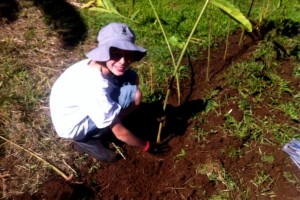
Further reading
Bates Ames, Louise, Ilg, Frances L., & Baker, Sidney M. Your Ten-to-Fourteen-Year Old (A Dell Trade Paperback New York 1988)
Payne, Kim John, with Lisa M. Ross Simplicity Parenting Using the Extraordinary Power of Less to Raise Calmer, Happier and More Secure kids (Ballantine Books Trade Paperbacks, New York, 2009)
Weschler, Toni Cycle Savvy: The Smart Teen’s Guide to the Mysteries of Her Body (HarperCollins, New York, 2006)
See also
Avoiding trouble with elevens, twelves and teens
Building self esteem and resilience
Sex and your teenager
Technology and your teenager
Drugs and your teenager
Developing sexuality and the prevention of sexual abuse in young children